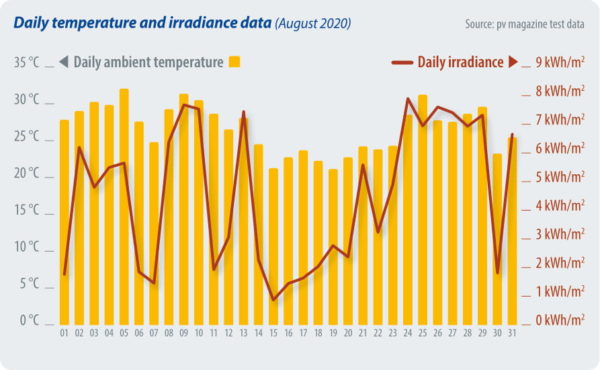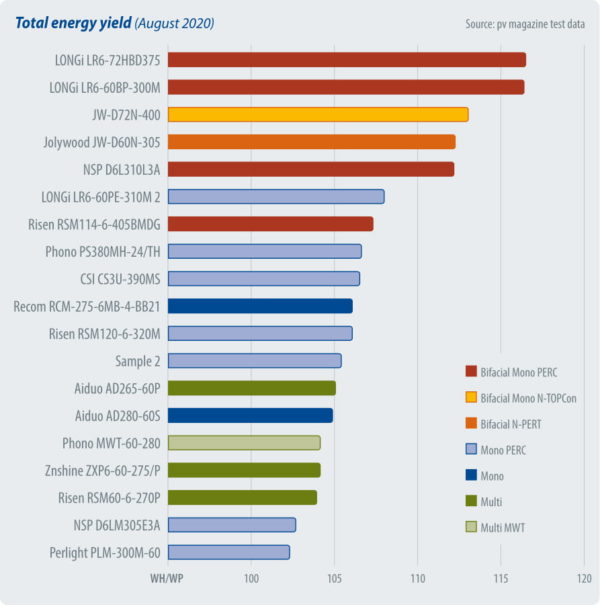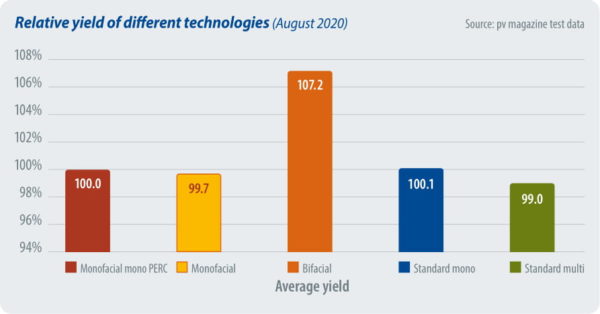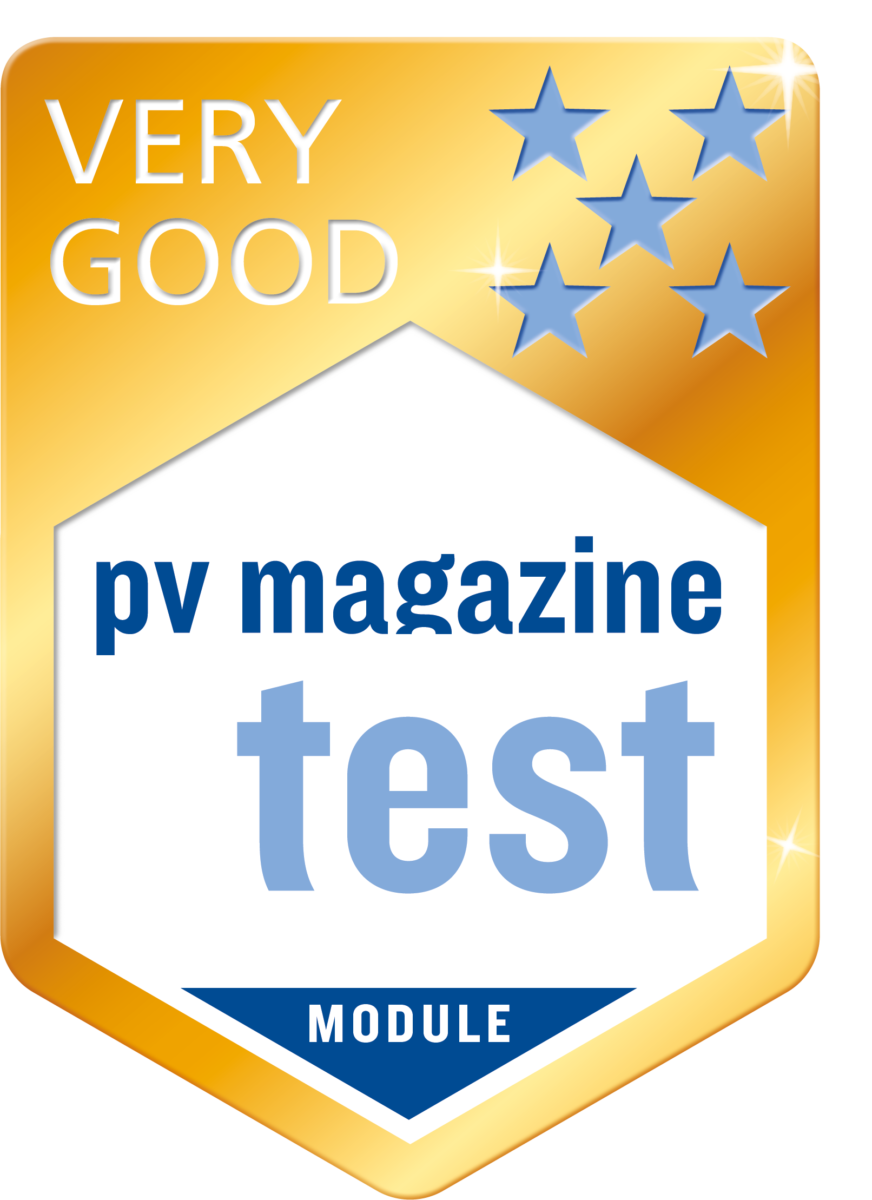The first chart to the right offers the meteo station data (irradiance and ambient temperature) for August 2020. The average bifacial boost is measured at 7.2% for the month. Bifacial boost is defined as the extra energy yield of the bifacial products compared to the average energy yield of all mono-facial, mono PERC products.
The chart to the bottom right shows the comparison between different PV module technologies for August 2020. Bifacial modules are steadily performing above all the other technologies, with multicrystalline silicon PV having the lowest yield.
A cast mono PERC module from GCL (GCL-M3/72H380), which was installed in July 2020 and ranked bottom from last month’s energy yield ranking, was found with a loose connection at the MC4 connector between the module and the meter. We are now in the process of replacing the MC4 connector for this PV module. For this reason, the GCL-M3/72H380 is removed from the energy yield table and all of the related analysis presented in this month’s article.



Notes on yield measurements:
- The energy yield is given in Wh/Wp and is calculated by dividing the energy produced by the solar PV module by the Pmax at STC of the module. This Pmax is the maximum STC power after a process of stabilization.
- The results are grouped in categories, per module type.
- The bifacial solar boost depends on a number of different parameters, including the bifaciality factor, the installation geometry, the albedo of the ground surface, and also the sun angle and diffuse irradiance. The ground in this case is gray gravel.
Author: George Touloupas
We are pleased to present the next batch of energy yield results from the outdoor test field in Xi’an, China. In this issue, we present the August 2020 results, along with analysis from George Touloupas, director of technology and quality at CEA.
Test cooperation
pv magazine test is a cooperative effort involving pv magazine, CEA and Gsolar. All testing procedures are carried out at Gsolar’s test laboratory in Xi’an, China. CEA supervises these tests and designed both the indoor and outdoor testing procedures.
This content is protected by copyright and may not be reused. If you want to cooperate with us and would like to reuse some of our content, please contact: editors@pv-magazine.com.
